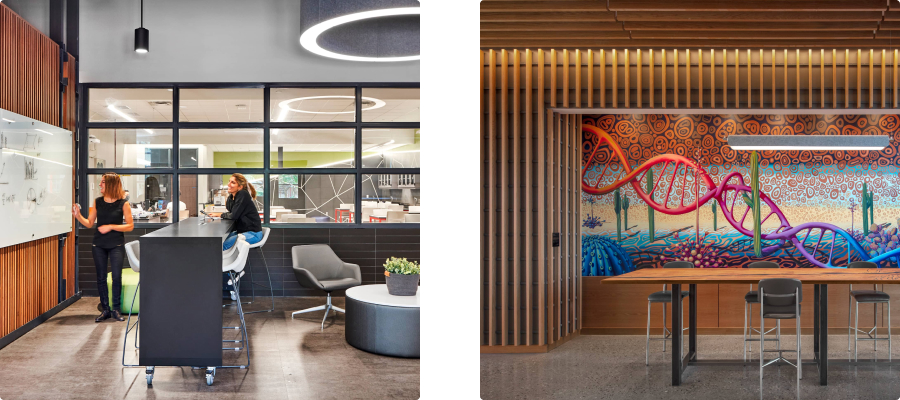Come see us.
Precocity LLC3400 N. Central Expressway, Suite 100
Richardson, TX 75080
info@precocityllc.com
(972)-378-1030


HKS engages Precocity to develop end-to-end web application for project management. When you’re managing a worldwide design project for a hospital or a football stadium, you bring in architects, designers, scientists, artists and engineers from all over the globe. You can’t wait until the end of the project to estimate your profitability. You need to know it right now.

HKS Inc. is an interdisciplinary global design firm with 1,300 highly talented, cross-industry professionals in 24 offices across dozens of countries. The breadth and depth of the company’s portfolio extends to hotel complexes, performing arts centers, sports parks, airport concourses and medical centers, and it spans decades of wide-ranging expertise.
The next step in its growth depended on locating that expertise more efficiently within the company. And for that, it contacted Precocity.
For years, HKS project managers looked for available human resources in an internal “bench,” a slow database containing details (name, location, expertise, availability) of its employees and contractors around the world. In an initial engagement, HKS hired Precocity for a proof of concept (PoC) application that its project managers could use for more-efficient, better-targeted searching.
Within eight weeks, Precocity had designed and implemented an optimized search index/engine. The performance improvements and flexibility enabled project managers to easily locate human resources the world over.
The success of the PoC convinced HKS that Precocity was up to the larger, more strategic task of helping its users create and manage projects more efficiently.

Project managers and estimators at HKS depend on Deltek Costpoint, an enterprise resource planning (ERP) system designed to cover the entire lifecycle of large contracting projects. At HKS, Costpoint resides in the Finance Department, and only specific users have permission to set up the company’s projects and plans in the system.
With access to Costpoint a scarce resource, project managers faced a bottleneck. They wanted to create projects and plans in a new, separate application that would update Costpoint without the intervention of their co-workers in Finance. That would make project management more accessible without the risk of increasing access to the ERP.
Besides greater access, project managers had a wish list of desired improvements for the new application so they could plan, estimate and run projects more efficiently:
HKS and Precocity worked together to scope the project, then their collaboration began.
Precocity’s business analysts worked with the product owners at HKS to understand user requirements, learn their vernacular and establish a common glossary of terms. The process of listening closely to the client’s description of objectives continually led to prompts like “Talk me through the user’s experience” and “Are we getting this right?” In the context of a DevOps board, HKS formulated stories around the features and functions they wanted developed. Precocity then converted the stories — some vague, some deeply fleshed out — into tickets, which became actionable programming tasks.
Before long, the first obstacle presented itself in the form of a data model that proved far more complex than it originally appeared. Some of the business rules for accessing and using the data were also unexpectedly complex, which made it difficult to get the results HKS wanted to see. Even executing common functions in the application, like distributing hours across tasks, proved harder to implement with the data model and business rules.
Another obstacle arose when it became apparent that some users would work in the application Precocity was building and other users would continue working directly in Costpoint. Precocity’s intention was to periodically merge the data from its application with Costpoint data, but accommodating both sets of users meant maintaining the source of truth in two places.

To overcome the hurdles, Precocity designed the application around a wide-ranging stack:
Precocity implemented multiple data pipelines specifically to ensure that information is updated in the correct data set at all times and that the wrong things don’t get overwritten. Additionally, the pipelines pull data from Costpoint in nearly real time so that application users can assign up-to-date project and sub-project numbers and avoid mismatches.
The process adds overhead to data loading, but it’s necessary to accommodate the complex data model and maintain source of truth in two places.
As the product owners at HKS add stories to the project DevOps board, Precocity translates them into tickets, then tasks, then new features and functions in the application.
That has brought big changes to project management at HKS. Users now lay out their project, find and apply resources and hours, and enjoy a spreadsheet view by day, week, month or year. They can then change resources and hours and extend or retract the project timeframe. They can select workers in other countries and convert their hourly rate into the base rate and currency of the project, for an apples-to-apples comparison. Each project has its own photo gallery and roster of past, current and future participants.
Most important, managers can better estimate whether their project will be profitable and continually gauge profitability throughout the project. That’s information they used to have only at the end of the project, after Finance generated its reports.
Along with the better user experience, Precocity has built in back-end improvements like role-based authorization that ensures only permitted users can access certain data and features. And, they have accommodated complex business rules; for instance, if a subcontractor assigns all its resources to same account, the application can break them out according to role played.

In the early days, Precocity’s engineers could monitor user activity, then push updates and features from test to production when nobody was using the application. With greater adoption, HKS users in at least one region are always using it now. That has necessitated the use of maintenance windows and lockouts for releasing updates and new features.
Find out how Precocity helps HKS and companies like yours to transform great ideas into digital experiences.